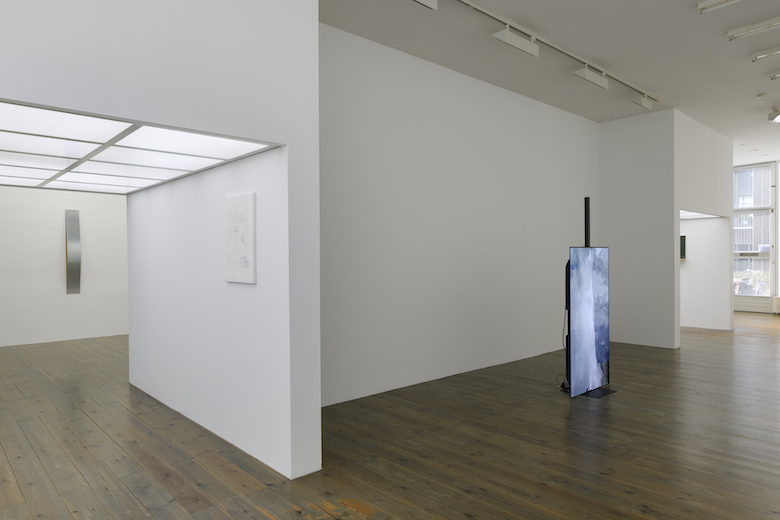
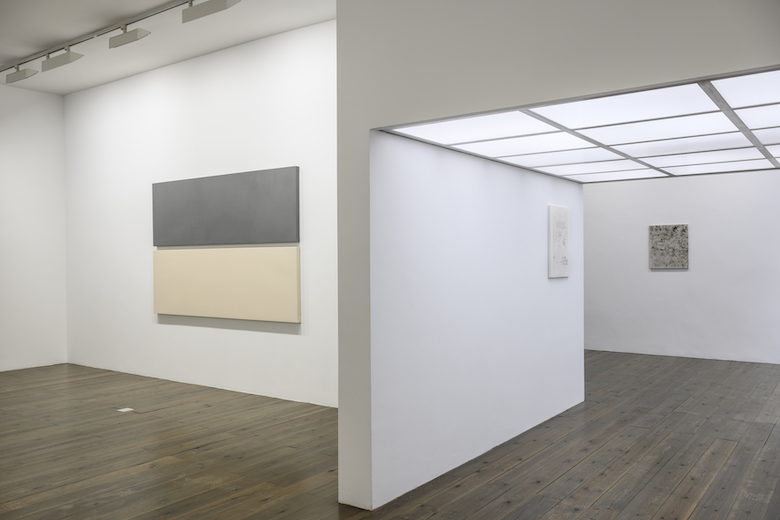
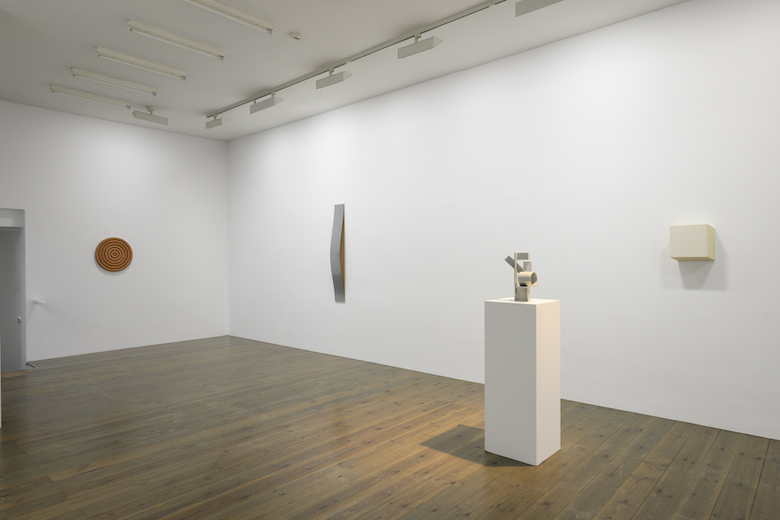
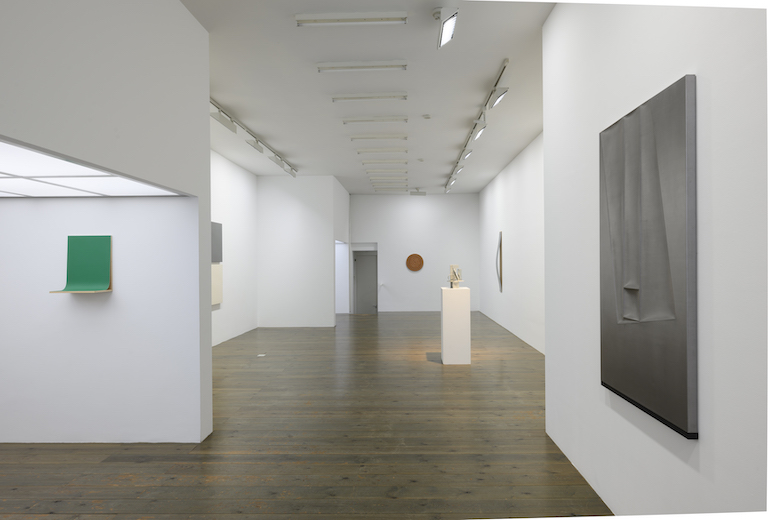
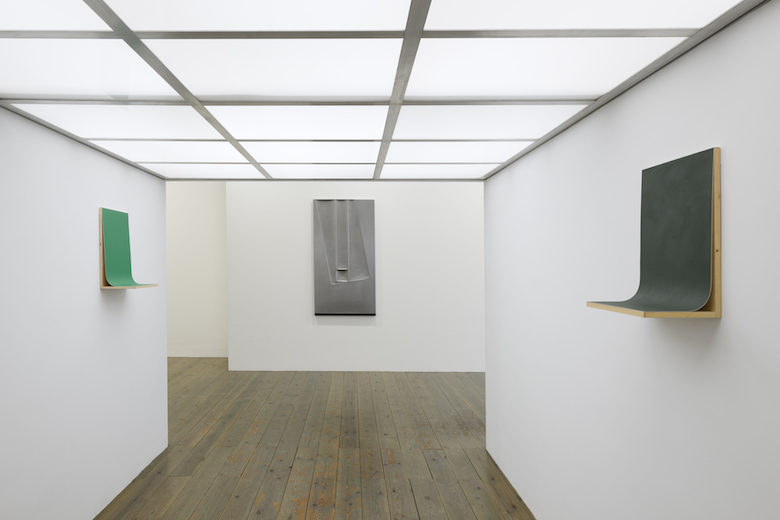
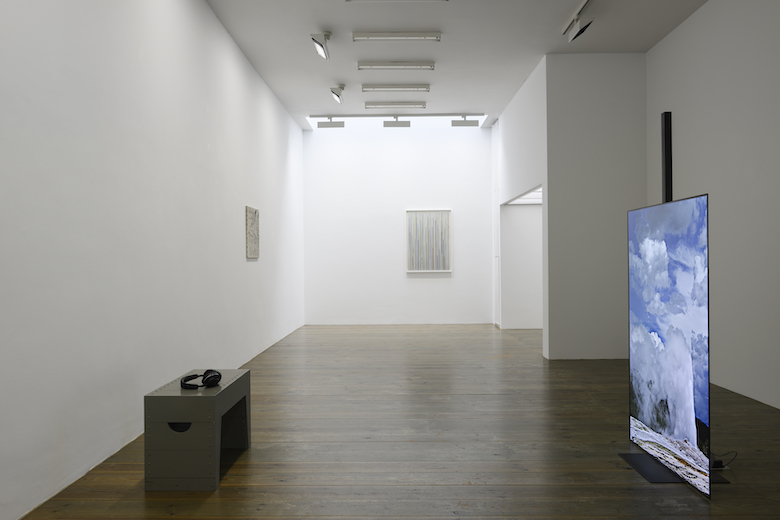
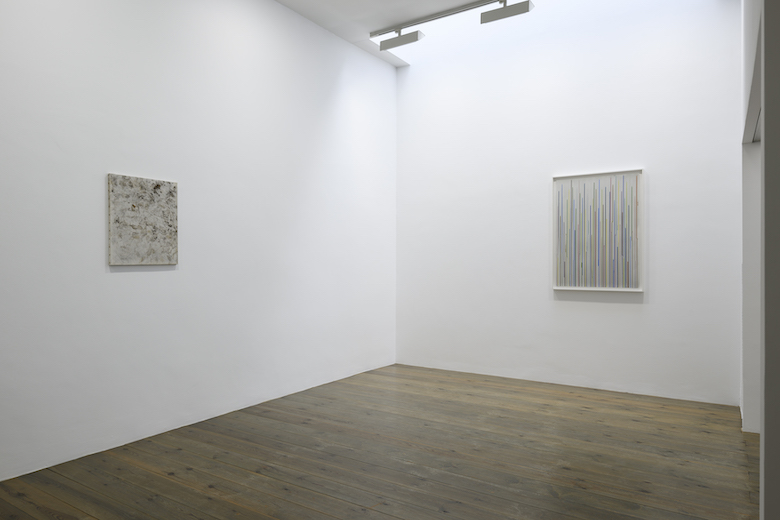
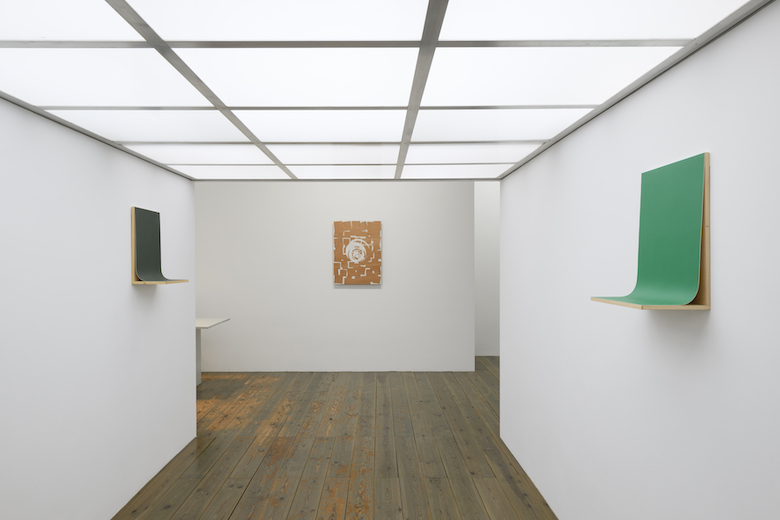
Friday January 27 opens the group exhibition Sediment with works by Alan Charlton, Alice Schorbach, Caro Jost, Dan Walsh, Domenico Bianchi, Ian Davenport, Karin Sander, Lesley Foxcroft, Martina Klein, Nunzio, Roos Theuws and Ruud Kuijer. The exhibition will last until February 25.
One of the works that will be on view in the exhibition, is a new video work by Roos Theuws, entitled 1870, which shows an image of a geyser. In the accompanying publication the composition of various metal oxides are mentioned on some sheets of colored paper. These materials are the sediments left behind by the geyser.
In the works of the other artists, the use of materials, such as iron, zinc, copper, palladium, lead, pigments, leaves and gravel, form a loose association with the concept of sediment, which can be seen as a metaphor for the artwork: a sediment in the bed of the stream of an artist's imagination.
Slewe Gallery is pleased to host the duo exhibition Time 2 Time with works by Caro Jost and Karin Sander, which will be on view until 12 March. Both artists live and work in Germany and are known for their conceptual approach and interest in appropriation. In their artistic research, they are connected by the search for the lost time, the discovery of traces left behind and their transformation into poetic artifacts. It is the first time that Slewe shows works by Karin Sander. Caro Jost’s works were already presented at the gallery in 2017.
Caro Jost, born in 1965 in Munich, appropriates foreign traces, materials or memories, which she transforms into autonomous art works of both autobiographical and social relevance. Her artistic strategy is about documenting time and historical reality and putting it in a new artistic and contemporary context. Because of that she started to build up her own personal archive of material and photographs in New York in 1998, and since then she has been collecting the material for her works on worldwide trips to locations of art history, artists' studios, and archives. This can be self-produced film footage, lost objects or documents that she collects in the archives of her favourite artists, but also snippets of conversations captured by chance or consciously, as well as traces and marks on the streets.
At the gallery Jost shows a selection of her so-called Streetprints, imprints in a synthetic material on canvas, made directly on site from street surfaces in various major cities around the world over the past 20 years. In addition, her Notes or Invoice Paintings will be presented. These works are three-dimensional objects made of canvas. Original documents are transferred to canvas, painted over, and are limited in their legibility by the deformation of the canvas. Caro Jost works between New York and Munich. Her works are collected and exhibited internationally. In 2020-21 she received a grant from the Pollock Krasner Foundation. You can listen to an interview with the artist by Robert van Altena here.
Karin Sander, born in 1957, who lives and works in Zurich and Berlin, will show a selection of her famous Gebrauchsbilder (Patina Paintings). These paintings are created in the locations where they are placed for a limited period of time. During that period, they absorb and reproduce the specific patina of this location, they collect dust, dirt, mould, notes or whatever else crosses the path of the work and its owner. These works are also self-portraits of their owners, at least bear traces of its use. The name of the location and duration determine the painting and provide its title.
In the exhibition she shows two of these large canvases of 300 x 500 cm and some smaller ones as well as one of her so-called Mailed Paintings, a standard sized primed canvas that has been sent unwrapped and unprotected to exhibitions by post, carrying multiple transformations, traces of their journey, stamps, marks, stickers and alike. Also, her Pflasterstein (Cobblestone) is an early example of Sander’s appropriation of objects from an everyday context and re-introducing them with slight alterations. In this case a found cobblestone is painted with egg tempera, traditionally used in Renaissance Italy.
Karin Sander’s works are collected and exhibited internationally. Recently she had solo exhibitions at Kunsthalle Tübingen (2021), Museion in Bolzano (2020) und Kunst Museum Winterthur (2019). Her work is represented by Esther Shipper in Berlin.